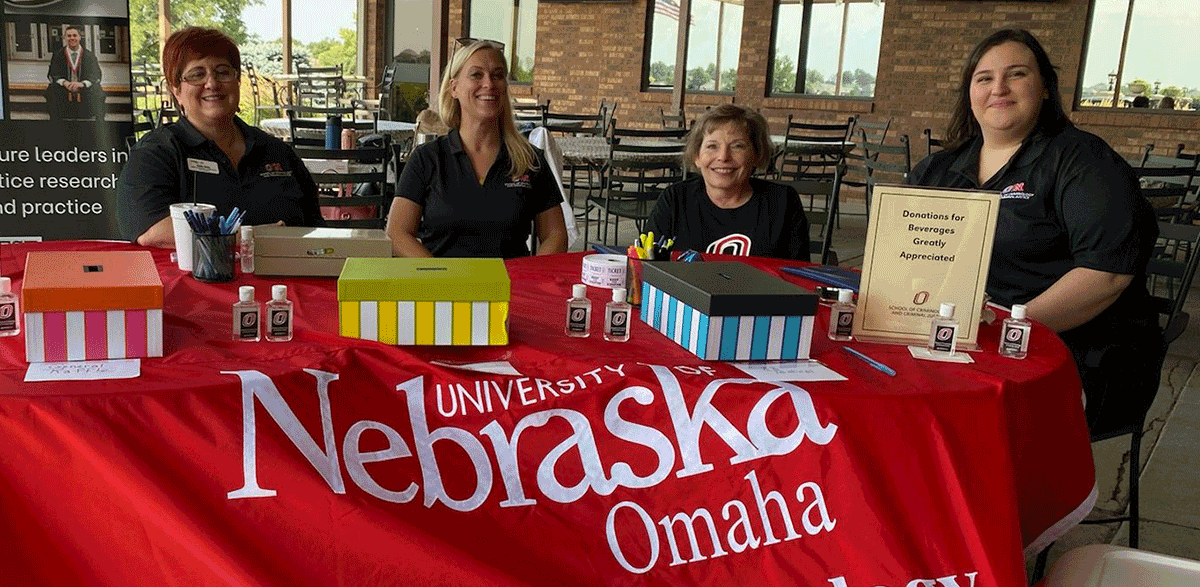CPACS Strategic Plan
The strategic plan for the College of Public Affairs and Community Service (CPACS) was developed in 2000 and revised periodically in alignment with concepts (e.g., student-centered, academic excellence, community engagement, workforce development, metropolitan mission) emphasized by the University of Nebraska Omaha’s (UNO) evolving strategic mission and goals. Download the CPACS Strategic Plan.

Mission
Empowering Future Leaders, Fostering Inclusive Communities, Creating Innovative Solutions
The College of Public Affairs and Community Service promotes the scholarship of engagement by:
- Fostering an environment where all learners can access high-quality educational offerings designed to promote skill development and civic engagement that prepares students for career pursuit and advancement.
- Conducting socially responsive research that advances scientific knowledge.
- Engaging in service that advances the university’s mission through partnerships with community and professional organizations.
Vision
To be the best college of public affairs by promoting an equitable and just society through transformative teaching, research, and service.
CPACS Strategic Goals and Objectives
CPACS GOAL 1: Provide meaningful educational opportunities in an inclusive and diverse environment, empowering students to create a positive impact in their communities and society.
Objective 1.1: Ensure students develop contemporary skills and competencies in their discipline-based courses and professional programs.
- Provide academic and professional curricula that address workforce needs and prepare students and professionals for current and future careers.
- Foster internships and other experiential learning opportunities to strengthen students’ awareness of current professional opportunities, issues, and challenges.
Objective 1.2: Utilize innovative strategies and pedagogical best practices to address the needs of evolving student populations.
- Broaden student exposure to diverse thought, lived experiences, and cultures through curricular and extracurricular activities.
- Prepare students to become global thinkers through opportunities for international engagement and discourse.
- Support student academic success and degree completion through advisement and support services.
Objective 1.3: Enhance professional development for faculty and staff to strengthen the mission, vision, and goals of CPACS.
- Utilize the Special Faculty Development Program as one mechanism to enhance inclusion and diversity.
- Support professional development for faculty to build skills, competencies, and perspectives.
- Provide opportunities for staff to develop skills, competencies, and perspectives for career advancement.
CPACS GOAL 2: Engage in research that advances the metropolitan mission of the campus and contributes to the welfare and betterment of society.
Objective 2.1: Develop and implement mechanisms to aid research faculty and staff in conducting preeminent research that advances the University mission.
- Facilitate research partnerships with community leaders, funders, and other stakeholders.
- Stimulate externally funded research that complements existing expertise.
- Assist the Nebraska legislature in developing responsive legislation to meet future needs.
- Encourage participation and leadership in professional associations that will help advance research.
CPACS GOAL 3: Promote community engagement through teaching, research, and service activities of faculty, staff, and students.
Objective 3.1: Offer courses, programs, and services that enhance connections to the community.
- Provide support and training for faculty to enhance community engagement in their courses.
- Facilitate faculty and staff partnerships with the community.
- Respond to community needs for education and training that support career and organizational advancement.
- Create a nexus between students and alumni that elevates professional development opportunities.
- Assess the extent to which courses facilitate community connection.